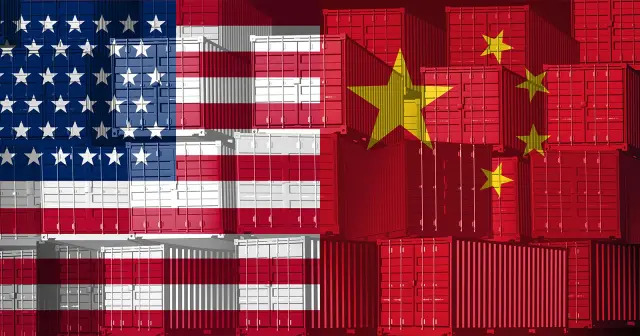Analysts’ Ideas of the Week
U.S.-China Deal Ignites Momentum: Two Stocks Poised to Benefit
Published: May 12, 2025
Author: FRC Analysts
View Complete Repor*Articles and research coverage are paid for and commissioned by issuers. See the bottom and below for other important disclosures, rating, and risk definitions, and specific information.
Disclaimer – FRC does not own shares or have fee-based agreements with the companies discussed.
Today’s announcement, of a temporary 90-day tariff reduction between the U.S. and China has sent markets soaring, with U.S. tariffs on Chinese imports dropping from 145% to 30%, and Chinese duties on U.S. goods falling from 125% to 10%. We believe two stocks stand out for their potential to capitalize on this development: Amazon (AMZN), and Tesla (TSLA). This article explores the key reasons behind their potential, including benefits, risks, and catalysts driving momentum.
The Tariff Reduction Landscape
The tariff rollback, agreed upon after high-stakes negotiations, aims to de-escalate a trade war that has disrupted global supply chains and inflated costs for businesses and consumers. Global markets reacted swiftly, with the S&P 500 and Nasdaq posting significant gains, reflecting optimism about increased trade flows and reduced costs. The temporary nature of the deal, however, keeps investors on edge, as the outcome of future talks will shape long-term prospects.
Takeaway: Investors should focus on companies with strong operational ties to this trade corridor while remaining mindful of the deal’s short-term horizon. Successful trade negotiations could sustain gains for these stocks, but a failure to secure a permanent agreement may lead to renewed volatility, impacting trade-sensitive sectors.
Opportunities and Challenges
- Amazon (AMZN) – E-Commerce Giant Riding the Trade Wave
Why It Can Benefit: Amazon (AMZN), a global e-commerce and cloud computing leader, sources a significant portion of its marketplace inventory from China. Lower tariffs reduce the cost of imported goods, potentially boosting margins or enabling competitive pricing to drive sales. The company’s cloud division, AWS, could also benefit indirectly if trade relief spurs economic activity, increasing demand for cloud services.
What Can Go Wrong: The 90-day tariff relief introduces uncertainty. If negotiations falter, reinstated tariffs could raise costs, pressuring margins or forcing price increases that dampen consumer demand. Amazon faces intense competition from rivals like Walmart and Target, which could limit its ability to fully leverage cost savings. Economic headwinds, such as inflation or reduced consumer spending, could further challenge sales growth.
Catalyst: Future catalysts include Amazon’s next earnings release, which could reflect improved margins or higher sales volumes, and strategic moves to optimize its supply chain in response to the trade truce.
- Tesla (TSLA) – Electric Vehicle Leader with Global Reach
Why It Can Benefit: Tesla (TSLA), a pioneer in electric vehicles, manufactures and sells vehicles in both the U.S. and China. The tariff reduction lowers costs for U.S.-made Model X and S vehicles exported to China, a key growth market, and reduces duties on Chinese-made components used in Tesla’s global supply chain. Tesla’s Shanghai Gigafactory also benefits from lower export costs to the U.S., enhancing profitability.
What Can Go Wrong: The temporary tariff relief poses a risk, as a return to high tariffs could disrupt Tesla’s cost structure and export strategy. China’s competitive EV market, with players like BYD, could challenge Tesla’s market share if price wars intensify. Supply chain disruptions or geopolitical tensions could also impact production and sales.
The opinions expressed in this report are the true opinions of the analyst(s) about any companies and industries mentioned. Any “forward looking statements” are our best estimates and opinions based upon information that is publicly available and that we believe to be correct, but we have not independently verified with respect to truth or correctness. There is no guarantee that our forecasts will materialize. Actual results will likely vary. Certain companies may be covered by FRC under an issuer paid model. FRC or companies with related management, and Analysts, may hold shares/securities in some companies mentioned in this report. This creates a potential conflict of interest which readers should consider . Distribution procedure: our reports are distributed first to our web-based subscribers on the date shown on this report then made available to delayed access users through various other channels for a limited time. To subscribe for real-time access to research, visit https://www.researchfrc.com/

